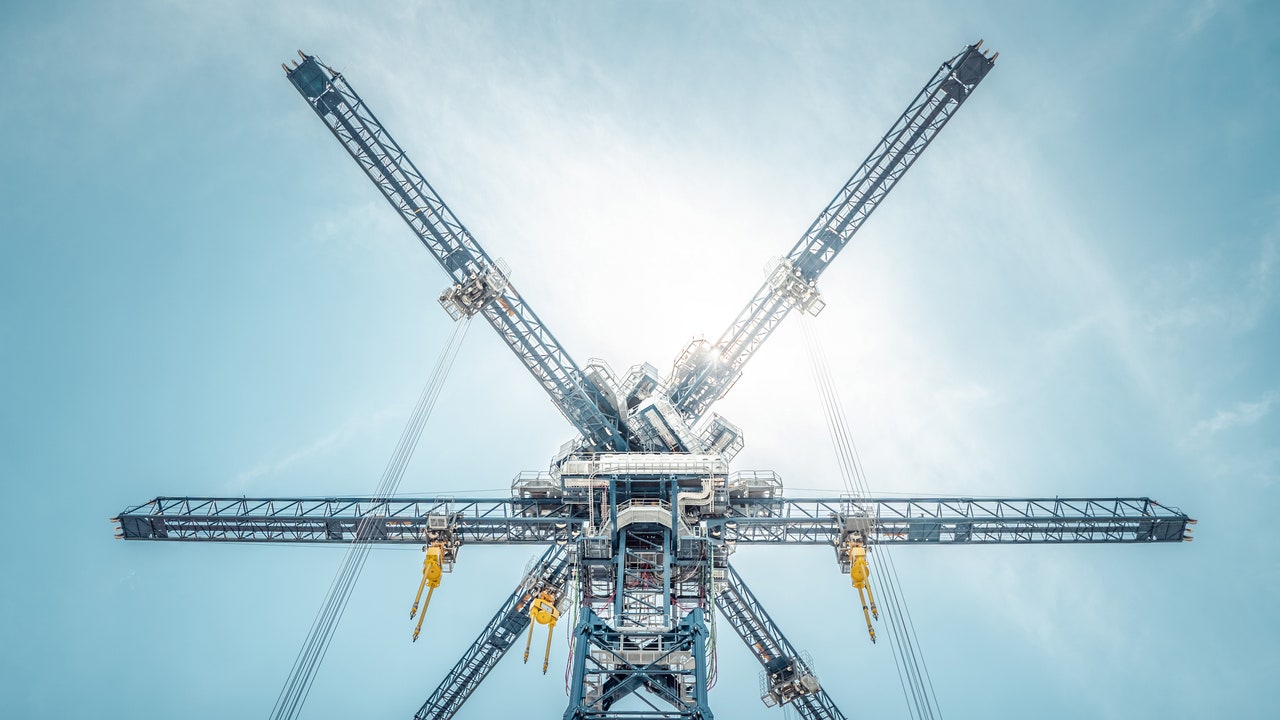The concrete blocks are slowly hoisted upwards by motors powered with electricity from the Swiss power grid. As each block descends, the motors that lift the blocks start spinning in reverse, generating electricity that courses through the thick cables running down the side of the crane and onto the power grid. In the 30 seconds during which the blocks are descending, each one generates about one megawatt of electricity: enough to power roughly 1,000 homes.



You can use hydro systems in countries where a great differencias of terrain levels, what is incompatible for Example with Belgium or the Netherlands or lots of contries in Africa, where are no much water, If the Netherlands puts a dam in the Rhin, Netherlands disappears, they only can construct big and high deposits for this which needs more concrete as this artifact, which can be good a alternative or a supplement, better than they put a water pipeline through several countries for the energy storing. Maybe the concrete blocks can be changed with iron blocks, which have a bigger mass and can be better recycled.
Every solution needs a inversion of energy, not all green, even pollutant from manufacturing products, like resines for eolic generators, PVC or other polymers for the cables and generators or toxic products for solarcells, but only one time for many years, not as the continous use of fossil energy I think, insteat of discriminate from the beginning, it’s better to try to find better solutions. It’s true that not all works as espected in the beginning, but if they don’t try it, the problem of energy storing persists,and avoid that a lot of countrys can use efficiently energy renovable.
Take a look at this- Compressed air underwater energy storage. http://euanmearns.com/a-review-of-underwater-compressed-air-storage/
Good idea, but I don’t believe that this system can store more energy than for a few houses. Can be a good system for a house near by a lake. For hydraulic store systems the use great lakes or very huge deposits… But yes, can be another auxiliary system in certain cases
That’s like looking at solar panels and saying you couldn’t power more than a few streetlights from it - it’s about scale.
For storing with this enough energy for a village, with the hidraulic system they need a big lake, and with this system a grlobe of 1 km or hundreds of them (???). Yes, it’s a question of scale, but due to the limitations of a system.
You don’t need to build a tower to store water. You can also build a reservoir by simply digging a hole.
No, to create a pressure a hole does not work, a pumping station uses the excess energy produced by the wind generators or photovoltaic cells to pump the water to a high tank, where, when emptying it, enough pressure is created to put in Turbines are running that generate energy to make up for what is lacking in wind or solar production. The same as the hydroelectric productions with dams. Without difference in height there is no flow or water pressure, first of physics. See the watertowers which give the water to the houses, al they are the highest poit in a village. Pumping stations are working exactly the same way, with the difference that instead of houses there are generators and that the deposit must be some bigger.
Hey, super late comment I know, but I’ve been thinking about this lately.
In that case, instead of a stack of concrete blocks, why not have a giant water tower with one tank at ground level and one tank high up in the air? You could even have it be a literal building: big tank underground, apartments in between, big tank on the roof. If lots of buildings in an urban core had this, it would actually be really efficient because there would be basically be no loss from power transmission.
Water will never get damaged like concrete blocks can, don’t produce carbon when it’s made, and can be easily replaced if any is lost.
Well, with this, that would be a negligible problem because it would be a closed system. It would basically only require an initial investment of water and very occasional top-ups. You don’t even need the water to be of that great quality if you’re not using the water tank for anything else, even sea water can be used. Or, if you’re using treated water, it can double as both the city’s potable water reservoir and energy storage. Plenty of cities already have giant water towers feeding the entire urban area after all, and nearly every high rise building already has potable water tanks like these, because it means they don’t have to run pumps constantly to maintain water pressure, and can rely on hydrostatic pressure due to gravity.
Plus, making concrete also requires water, so using concrete probably isn’t saving that much in it. And with concrete, the water is permanently incorporated into it and can never be reused again, probably not the best idea for an already water scarce region.
Yes, but concrete need less water and in a lot of countries with lack of water it’s too valuable to be used as a simple weight, besides it requires a much larger installation due to the lower specific weight and greater maintenance due to evaporation and eventual losses, which is not necessary in concrete, which can last for centuries with minimal maintenance, in installations that are much more compact. The best way to store energy depends on many factors and can vary greatly, depending on the circumstances of each country. Where there are large slopes and mountainous regions, without water shortage, naturally, water tanks are the obvious solution, while in desert areas it is not, in others it can be a solution in salt mines, as thermal storage, etc.